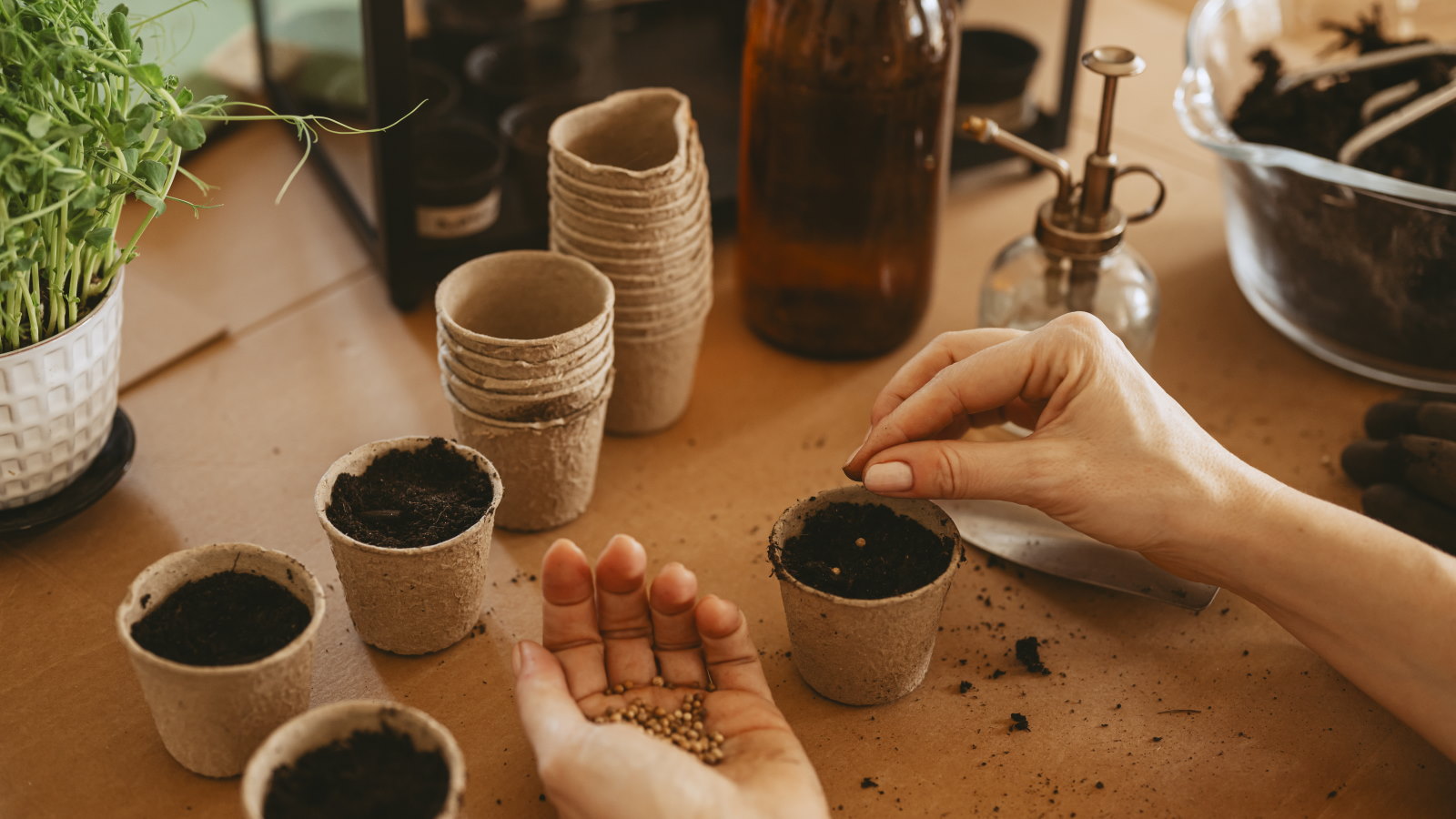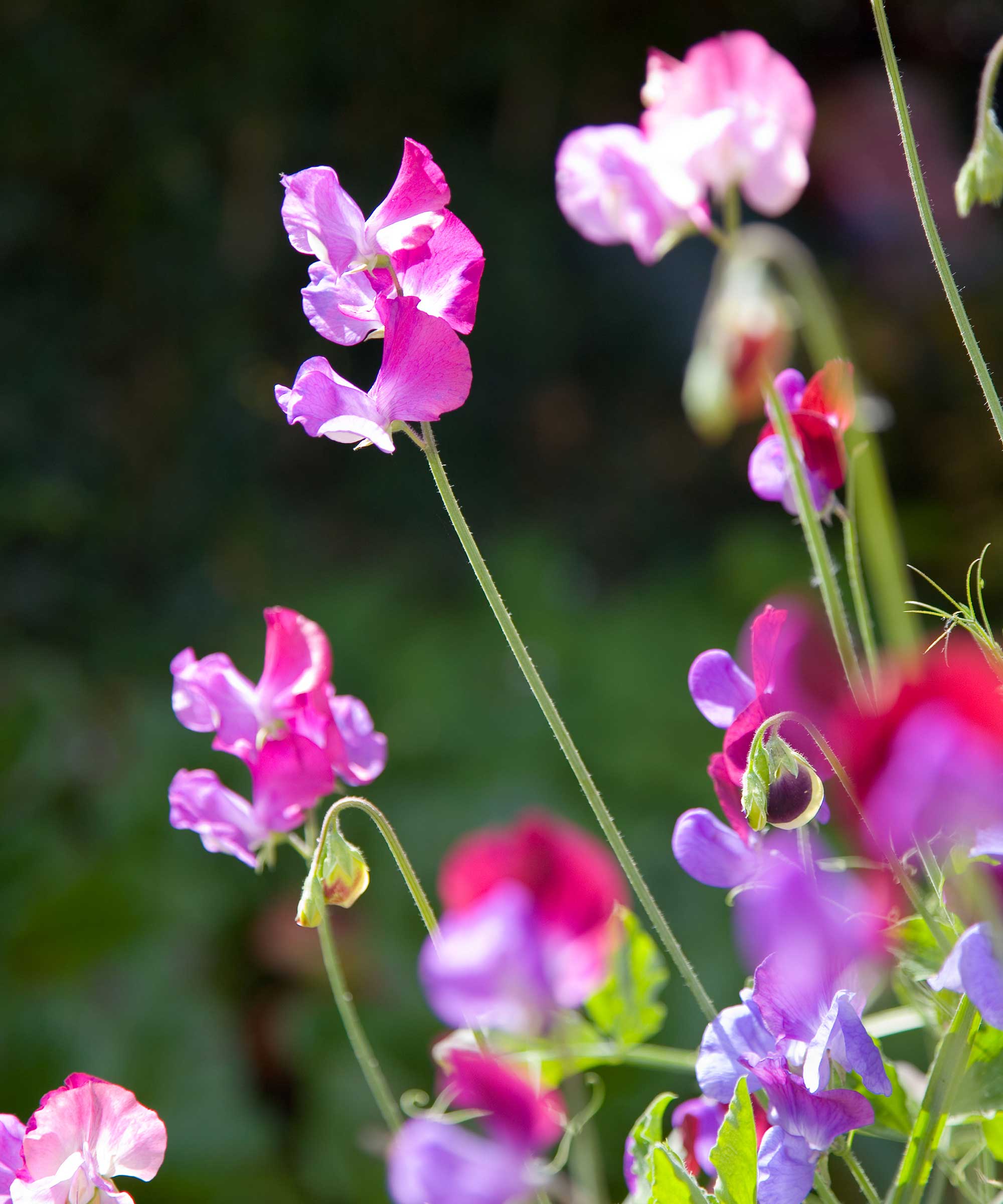
December is a time of cold, with frosts and snow for many of us, and the idea of sowing seeds may be far removed from any gardener’s plans. There are still gardening jobs to do throughout the winter, however, and that can include sowing a selection of seeds - albeit a small one.
If you do intend on sowing seeds in December, you will need to do it indoors and germinate seeds in a heated greenhouse or inside the house. The likes of a heated propagator or heated mat will often be beneficial in providing vital warmth to help germinate the seeds.
Sowing seeds in December helps you to get ahead and you will reap the benefit of earlier blooms come the warmer months, along with enjoying a longer flowering season.
In truth, the gardening year truly never ends, it may be cold outside but there are also things you can plant in December out in your backyard.

What can you sow in December?
The options for seeds to sow in December are minimal, thanks to the low temperatures and light levels of winter. However, there are still seeds you can sow for a flower bed and we take a closer look at some potential ideas to add to your winter to-do list.
1. Geraniums

Tender geraniums, or pelargoniums, can be sown indoors from late December onwards to provide early displays of color. It means that these hugely attractive plants, which come in a plethora of colors and can have glorious scented foliage, can be flowering as early as April onwards from a sowing in December. Deadhead your geraniums regularly and you can then keep them blooming all summer long.
The seeds are best sown in free-draining seed compost in trays or pots and germinated at temperatures of 70-75°F. Keep a close eye on your trays and make sure to keep the soil consistently moist, but not waterlogged, and do not let it dry out during the early stages of germination.
These tender plants can be potted up and then moved outside after the risk of frost has passed. They will then need to be moved indoors again when the temperatures drop, to overwinter geraniums. A great example of a geranium to add a pop of color to any flower bed or pot is the Geranium Border Mix available at Burpee.
2. Laurentia

Laurentia are half-hardy annuals, they are usually grown as annuals in colder climates but can be hardy in US hardiness zones 7-10. These delicate and compact plants have soft green foliage and lots of small star-shaped flowers. Laurentia are popular in flower beds and borders, as well as for filling gaps in container gardens.
Sowing these heat-loving plants in December will require additional heat, courtesy of a propagator or heating mat, as they also ideally want temperatures of at least 70°F.
The bonus of an early sowing, providing you can give the seeds the heat they want to germinate, is that your Laurentia will flower from early summer onwards and provide blooms and color all the way through until the frosts arrive.
A complete seed starter kit that includes a seed tray, humidity dome, seedling heat mat, grow light for seed starting and light stand. Everything you need to sow and grow seeds indoors - even through the winter months
3. Snapdragons

Snapdragons, or antirrhinums, are a classic cottage garden plant and another popular flower which can be sowed indoors in December to flower early in the summer. Winter sowing can mean that your snapdragons start flowering from June onwards.
There are many snapdragon varieties to choose from and they are plants that do need a long period of growing before bursting into bloom. You could choose a mix, such as the Snapdragon Liberty Classic Series Mix from True Leaf Market, to get a range of different colors for your beds or borders.
Sow the snapdragon seeds on the surface of quality seed compost. Do not cover the seed with a thin layer of soil, simply leave them on the surface and place the tray or pots in a propagator. Alternatively, put the tray in a clear plastic bag until the seeds have germinated. The ideal temperature for germination is around 68-75°F. Prick seedlings into individual pots and then grow them until you transplant seedlings out after the risk of frost has passed.
4. Sweet Peas

If you want to grow sweet peas, the seeds can be sown anywhere from fall through to spring - but a sowing in December is reputed to offer benefits to the plants. Sweet peas sown in winter will need the protection of a greenhouse or be germinated on a windowsill, but a winter sowing is thought to help to produce sturdy plants, with both solid top growth and strong roots.
Sow your sweet peas in deep pots or root trainers, available at Amazon, filled with good seed compost and plant each seed around an inch deep in the soil.
Keep the pots moist, but not waterlogged as excess moisture can cause problems for sweet pea seedlings. Also keep a close eye on your plants as it is well known that mice do love to eat sweet pea seeds.
A lovely mix of sweet pea seeds provides a combination of lavender, scarlet, cream, pink, purple, red, and white blooms that are ideal for cut flowers
5. Begonia

Begonias are bright plants that can provide bright pops of color throughout summer as part of your backyard ideas. They come in various warm shades and can thrive in borders, pots, or hanging baskets.
It is more common to propagate begonias from plant cuttings, as begonias are not the easiest plants to grow from seed. You can start begonia seeds in winter, but the process needs care and patience. The seeds themselves are tiny and the seedlings they produce are also very small - so you need to be careful when embarking on growing begonias from seed.
Lightly sow the seeds into small pots or modules filled with seed compost. Gently press them into the compost but do not cover the seeds as they are minuscule and need light to germinate. Place the container into a propagator or on a warm windowsill to germinate at temperatures of 70-75°F. Begonia seeds are slow starters and may take 4-5 weeks to germinate.
Discover the range of begonia seeds at True Leaf Market
6. Hardy Cyclamen

Hardy cyclamen are great winter plants for pots and borders and the types of cyclamen suited for sowing in December include Cyclamen coum - the classic winter-flowering cyclamen - and Cyclamen hederifolium.
Cyclamen seeds need to be soaked overnight to help improve the likelihood of germination and be sowed thinly in small pots. Cover the seeds lightly with a thin layer of compost, vermiculite, or potting grit to block out the light and water well.
Keep the pots in a shady spot and ensure the soil is consistently moist. Cyclamen should germinate at temperatures of 60°F, but it requires patience as some seeds can take months to germinate.
7. Tulips

December is not too late to sow spring bulbs - it is too late for the likes of daffodils or hyacinths, but there are still some options available.
If you want to plant tulips, they can still go into the ground this month provided the ground is not frozen. If you haven’t got around to planting tulips, then December is a fine time to complete the tasks and the bulbs will still flower in spring.
December can be a good month to plant tulips if you live in a mild climate, as it is beneficial to wait until after the first frosts to reduce the risk of tulip fire.
You can also plant crocus bulbs in the first half of December.
A unique mix of 100 different tulips will flower throughout the whole of spring for a stunning display of tulips in your backyard
A specially-formulated compost for starting seeds is always going to be the best soil to start seeds in. Multi-purpose compost can also be used, but do not be tempted to use old garden soil to sow seeds into as it will sit far too wet over the winter months.







